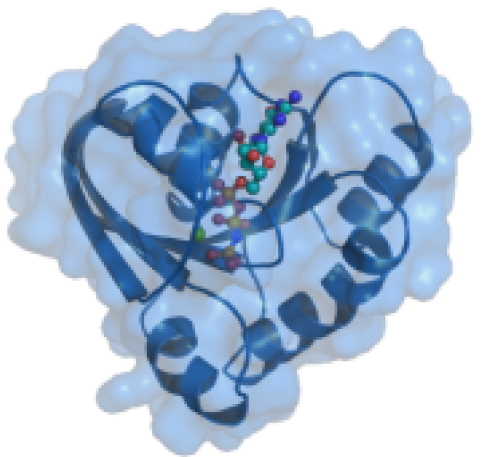Addgene
Addgene is a non-profit organization dedicated to making it easier for scientists to share plasmids. Addgene is reaching this goal by operating a plasmid repository for the research community. We are working with thousands of laboratories to assemble a high-quality library of published plasmids for use in research and discovery. By linking plasmids with articles, scientists can always find data related to the materials they request.
CenterWatch
CenterWatch lists more than 80,000 active clinical trials seeking study volunteers each month, making it the largest online and dynamic database of global clinical trials involving new drugs and devices regulated by the FDA and the Department of Health and Human Services. Listings are posted across a wide range of medical conditions and are searchable by therapeutic area, disease or geographic location.
ClinicalTrials.gov
ClinicalTrials.gov offers up-to-date information for locating federally and privately supported clinical trials for a wide range of diseases and conditions. A clinical trial (also clinical research) is a research study in human volunteers to answer specific health questions. Interventional trials determine whether experimental treatments or new ways of using known therapies are safe and effective under controlled environments. Observational trials address health issues in large groups of people or populations in natural settings. ClinicalTrials.gov currently contains 115,417 trials sponsored by the National Institutes of Health, other federal agencies, and private industry. Studies listed in the database are conducted in all 50 States and in 178 countries ClinicalTrials.gov receives over 50 million page views per month 65,000 visitors daily.
GeneCards
GeneCards is a searchable, integrated, database of human genes that provides concise genomic related information, on all known and predicted human genes. The GeneCards human gene database extracts and integrates a carefully selected subset of gene-related transcriptomic, genetic, proteomic, functional and disease information, from dozens of relevant sources. It provides robust user-friendly access to up-to-date knowledge. GeneCards overcomes barriers of data format heterogeneity, and uses standard nomenclature and approved gene symbols. GeneCards presents a complete summary for each gene and provides the means to obtain a deep understanding of biology and medicine. Information is featured in 18 GeneCards sections as shown below.
HGNC
HGNC (HUGO Gene Nomenclature Committee) is a non-profit making body which is jointly funded by the USNational Human Genome Research Institute (NHGRI) and the Wellcome Trust (UK). We operate under the auspices of HUGO, with key policy advice from an International Advisory Committee (IAC). We also use a team of specialist advisors who provide support on specific gene family nomenclature issues, and we work in close collaboration with staff at MGNC and RGNC. For each known human gene we approve a gene name and symbol (short-form abbreviation). All approved symbols are stored in the HGNC database. Each symbol is unique and we ensure that each gene is only given one approved gene symbol. It is necessary to provide a unique symbol for each gene so that we and others can talk about them, it also facilitates electronic data retrieval from publications. In preference, each symbol maintains parallel construction in different members of a gene family and can also be used in other species, especially the mouse.
Missouri S&T cDNA Resource Center
The cDNA Resource Center is a non-profit service providing full-length cDNA clones encoding human signal transduction proteins to the research community. The distribution fee reflects our direct costs for producing, verifying, and distributing these clones. The Center provides clones of human proteins that are full-length, sequence verified, expression verified in most cases by coupled in vitro transcription/ translation assays, propagated in versatile vectors (primarily the mammalian expression vector pcDNA3.1+, Invitrogen), free of extraneous 3′ and 5′ untranslated regions, and available in wild-type, epitope-tagged and useful mutant forms (e.g., constitutively-active, dominant negative, PTX-resistant).
Protein Interaction Domains – The Pawson Lab
This site provides a brief profile of over 80 protein interaction domains (e.g., SH2, SH3, START, SAM, PH, BRCT), with animated protein structures and examples of proteins with these domains and their interaction partners.
Scansite
Scansite searches for motifs within proteins that are likely to be phosphorylated by specific protein kinases or bind to domains such as SH2 domains, 14-3-3 domains or PDZ domains.
SMART
SMART (a Simple Modular Architecture Research Tool) allows the identification and annotation of genetically mobile domains and the analysis of domain architectures. More than 500 domain families found in signalling, extracellular and chromatin-associated proteins are detectable. These domains are extensively annotated with respect to phyletic distributions, functional class, tertiary structures, and functionally important residues. Each domain found in a non-redundant protein database, as well as search parameters and taxonomic information, are stored in a relational database system. User interfaces to this database allow searches for proteins containing specific combinations of domains in defined taxa. For all the details, please refer to the publications on SMART.
UniProt
The mission of UniProt is to provide the scientific community with a comprehensive, high quality and freely accessible resource of protein sequence and functional information. UniProt is comprised of four components, each optimized for different uses. The UniProt Knowledgebase (UniProtKB) is the central access point for extensive curated protein information, including function, classification, and cross-reference. It consists of two sections: UniProtKB/Swiss-Prot which is manually annotated and is reviewed and UniProtKB/TrEMBL which is automatically annotated and is not reviewed. The UniProt Reference Clusters (UniRef) databases provide clustered sets of sequences from the UniProtKB and selected UniProt Archive records to obtain complete coverage of sequence space at several resolutions while hiding redundant sequences. The UniProt Archive (UniParc) is a comprehensive repository, used to keep track of sequences and their identifiers. The UniProt Metagenomic and Environmental Sequences (UniMES) database is a repository specifically developed for metagenomic and environmental data.
